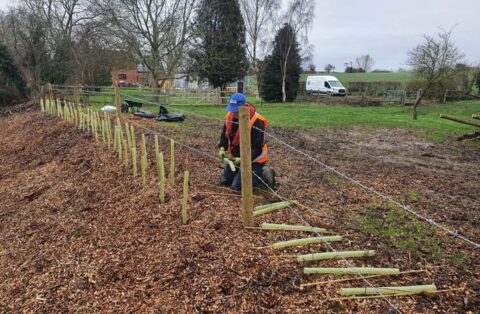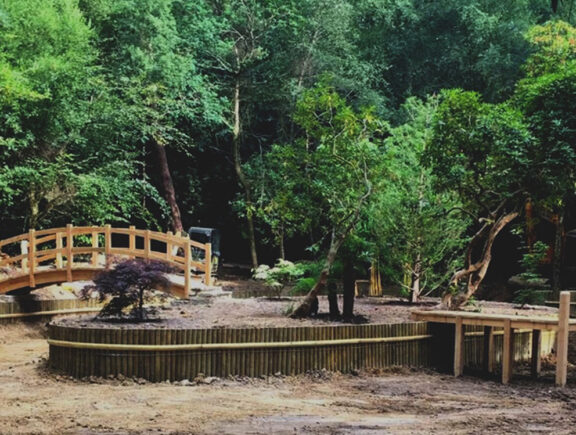The initial vegetation cut was made from the shallow water course so working within the channel could be avoided once the salmonid spawning season began. Vegetation was removed from the channel bed up to the top of the banks and from around in-channel structures such as outfall headwalls, bridges, and flood walls. Trees under 200mm in diameter were also removed.
Due to the sensitive nature of the works, Stonbury engaged an Ecological Clerk of the Works (ECoW). When they first arrived on site, they provided a toolbox talk covering all areas of work. Once the initial cut was complete, several other flood mitigation activities were undertaken.
Bat Survey
The stand of seven to eight trees had low value for roosting bats but as a precautionary measure they were gently soft felled using tree shears that allowed further safe inspection once on the ground by the ECoW who were licensed to carry out the work. Any large trees over 200mm and at the top of the bank were left standing.
Hedge Machine Cutting
The further clearance of shrubbery and trees on the top of the bank was overseen by the ECoW and particular attention was paid to the hedge where there may have been dormice.
Fence Line Recommission
The cattle drinking areas were heavily poached, which increases turbidity in the stream and is damaging to potential salmonid spawning gravels, therefore these areas were fenced and a solar powered solution will be installed to provide pumped water from the river to satisfy the riparian landowners’ farming requirements. The protected areas were planted with approximately five thousand hedge whips of a variety of native species, in biodegradable guards. These measures enable the project to achieve biodiversity net gain.
Silt Berm Removal
The silt bank below the road bridge causes a significant blockage and reduces stream capacity. After investigating removal options including air lift and suction, the team decided to mobilise a small machine to dig out approximately two hundred cubic meters of silt, which is placed on the opposite bank and allowed to vegetate.
The Environment Agency provided excellent feedback on the teams engagement with the local community and environmental mitigation measures.








